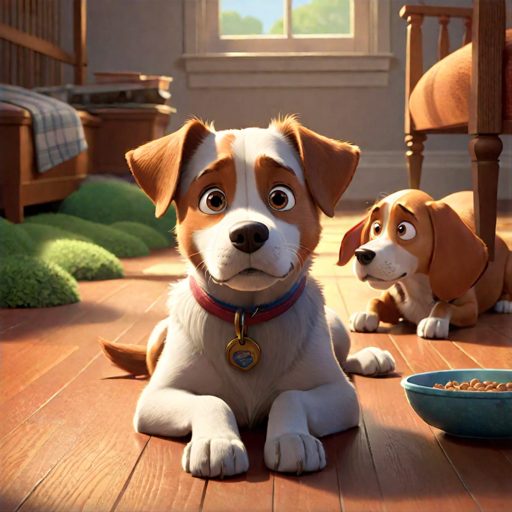
Tail Wagging: Oh My Dog Uncovers Why?
Recommended for Preparatory Grades
Alright everyone, brace yourselves because we are diving into the thrilling world of dogs and the mystery behind their tail-wagging! Picture this: we’re not just focusing on everyday dogs, but delving deep into the reasons behind their energetic tail movements.
This tale goes beyond your typical dog story. We are embarking on a grand adventure to uncover the profound bond between humans and dogs, a companionship that has thrived for thousands of years.
Let’s eagerly peel back the layers of this secret, as if unwrapping the most thrilling present imaginable. We’ll examine every detail, ready to embrace the emotions, to truly understand why dogs wag their tails. Are you with me? Prepare for an exhilarating journey!
Listen to the news
The Language of Tail-Wagging
- Dogs wag their tails, and it’s not just for kicks. This is their way of talking without words. It’s like they’re painting a picture with their tails, showing us their emotions and intentions. This isn’t some rudimentary sign language; it’s a sophisticated form of expression. Oh, my dog, they’re telling us so much if we just pay attention!
- Now, the way a dog wags its tail can mean different things. Swing it more to the right, and it’s like they’re saying, “Hey, I’m curious about this!” Wag it to the left, and it’s more like, “I’m not too sure about that.” Then there’s the low wag, pinned down – that’s dog speak for feeling insecure or submissive. It’s like they have a whole dictionary just for tail movements!
The Evolution of Tail-Wagging
- Let’s rewind the tape a bit. The story of tail-wagging might have started with our ancestors. The “domestication syndrome” hypothesis suggests that when humans were first making friends with wolves, the ones that wagged their tails were seen as friendlier. So, maybe tail-wagging was a ticket to getting domesticated. Oh, my dog, our forefathers were picking pups based on their tail moves!
- Then there’s this other theory – the “domesticated rhythmic wagging” hypothesis. It’s all about humans being drawn to rhythms. Maybe tail-wagging was like a beat that got our ancestors tapping their feet, leading them to favor tail-wagging dogs. It’s like the dogs were dancing their way into human hearts.
Understanding and Future Exploration
- Okay, so we’ve got theories and observations, but there are still pieces missing from this puzzle. How much of this tail-wagging is a conscious effort, and how much is just instinct? And how do dogs’ wild cousins, like wolves, stack up in the tail-wagging department? Oh, my dog, there’s still so much to learn.
- Researchers are itching to dive deeper. They’re talking about using high-tech stuff like video analysis, neuroimaging, and checking out physiological responses to get to the bottom of this. This isn’t just about understanding dogs better; it’s about seeing how this behavior reflects our shared history with these animals.
A Journey of Discovery
So, wrapping this up, figuring out why dogs wag their tails is more than just a curiosity. It’s a window into the relationship between humans and dogs, a bond that’s been cooking for ages.
As we keep exploring and understanding, let’s not forget to appreciate this connection. Oh, my dog, it’s a wild ride through history, behavior, and emotion, all wrapped up in the wag of a tail.
Let’s keep walking this path together, learning from our furry friends and the silent, yet profound, ways they communicate.
Similar Stories
- The adorable reason why dogs tilt their heads!
- Dogs can sense one’s pain through one’s sweat and breath!
- Dogs vision: How do dogs see the world?
- Puppy Dog Eyes have a scientific reason
![]()
Curious Times is a leading newspaper and website for kids. We publish daily global news aligned to your learning levels (also as per NEP 2020): Foundational, Preparatory (Primary), Middle and Senior. So, check out the News tab for this. We bring kids’ favourite Curious Times Weekly newspaper every weekend with top news, feature stories and kids’ contributions.
The following social media platforms allow you to communicate with us: Instagram.
0 (Please login to give a Curious Clap to your friend.)
